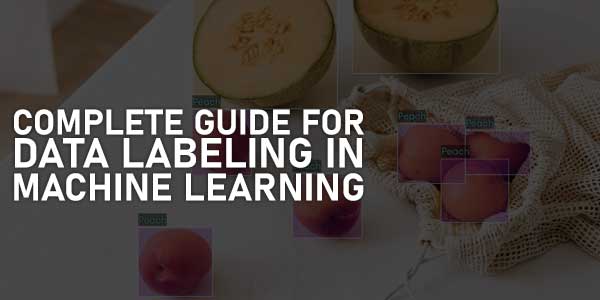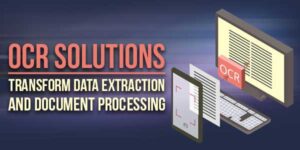
The new wealth for firms nowadays is data. The proper use of any data has been positively impacting society as technologies like artificial intelligence gradually take over the majority of our daily activities. Effective data separation and labeling allow machine learning algorithms to identify problems and offer pertinent, workable solutions.
To make the computer respond in a “smart” manner, we teach it different methods and input the data in different formats with the use of data labeling. An enormous amount of homework is required for the science of data labeling, which is to label or annotate the datasets with several versions of the same information. Even if the end result is unexpected and makes our daily lives easier, there was a great deal of work and admirable dedication put into it.
Table of Contents
What Is Labeling Data?
The kind and quality of input data in the machine learning process determines the type and quality of output. Your AI model’s accuracy is enhanced by the caliber of the data that was utilized to train the system.
To put it another way, data labeling is the act of labeling or annotating unstructured or structured data sets in order to teach a machine to identify the differences and similarities between them.
Let’s use an example to better grasp this. You must label every red light in a variety of images in order to teach the machine that a red light indicates that it should stop. AI uses this information to build an algorithm that, in every situation, interprets a red light as a stop signal. Another illustration is the ability to separate music genres using different datasets labeled jazz, pop, rock, classical, and other genres.
Difficulties With Data Labeling:
Every new development in structure or technology has advantages as well as disadvantages. This also applies to data labeling. Although data labeling can significantly reduce the time required to scale a company, there is a cost associated with it. Let’s linger on a few of the difficulties that come with data labeling.
Expenses In Terms Of Work And Time:
Obtaining large amounts of niche-specific data is a difficult endeavor in and of itself. The already laborious operation is made even more time-consuming by manually putting tags on each item. When a project is managed internally, the majority of the project’s time is dedicated to data-related activities, such as data preparation, labeling, and gathering.
Incoherence:
Different labeling criteria may be used by annotators with varying levels of skill. As a result, the likelihood of inconsistent labeling is very high. That being said, data accuracy rates will be significantly greater when multiple people classify the same data set.
Domain Knowledge:
You would feel compelled to hire labelers with specialized domain knowledge for particular sectors. For instance, it will be extremely difficult for annotators without sufficient subject expertise to correctly categorize the items in ML software for the healthcare sector.
Flaws:
Human mistake is a common occurrence in every repetitive task. Errors can always occur while labeling by hand no matter how experienced the human laborer is. Since annotators must deal with large volumes of raw data for labeling, ensuring zero errors is very impossible.

Various Approaches To Data Labeling:
Data labeling, as previously indicated, is a laborious process that calls for attention to detail. The method used to annotate data will differ depending on the problem statement, the volume of data that needs to be tagged, the complexity of the data, and the style.
Let’s examine the several strategies that your business might choose from depending on its financial and temporal resources.
Inhouse Data Labeling:
The data labeling process can be handled internally by the organizations, depending on the nature of the industry, the amount of time left to finish the specified AI project, and the availability of necessary resources.
Advantages:
- High precision
- Superior quality
- Streamlined monitoring
Disadvantages:
- Slow and time-consuming
- Need a lot of resources
Crowdsourcing:
Many crowdsourcing sites offer labeled sourcing data sets from independent contractors. This technique can be applied to annotate generalized data, such as images.
Recaptcha is the most well-known instance of crowdsourced data labeling. To verify that they are human, the user is required to recognize particular categories of photos. Based on the input provided by other users, these are confirmed. This serves as a label database for a variety of photos.
Advantages:
- Simple and rapid
- Economical
Disadvantages:
- Not suitable for data requiring domain knowledge
- One cannot guarantee quality
Outsourcing:
Crowdsourcing and internal data labeling can be bridged through outsourcing. Employing outside companies or people with subject-matter experience can assist organizations with both short- and long-term projects.
Advantages:
- Ideal for important short-term initiatives
- Staff members are approved by third-party outsourcing companies.
- Offers pre-built and customized data labeling technologies based on your company’s requirements.
- Can choose to work with professionals in data labeling specific to a niche
Disadvantages:
- It can take time to manage the third party.
Machine-Oriented:
Machine-based annotation is one of the newest methods of data labeling and annotation that is extensively utilized and approved by industries. Using data labeling software to automate the process of data labeling speeds up the labeling process and decreases the need for human intervention. Data can be labeled using the active learning technique, and training datasets can automatically add the tags.
Advantages:
- Faster labeling and data processing
- Requires less involvement from humans
Disadvantages:
- Better quality, but still not as good as human tagging
- If mistakes are made, human intervention is still necessary.
The Working Of Data Labeling:
You can select the method that best meets your demands based on your business needs. On the other hand, the data labeling procedure operates in the subsequent chronological order.
Data Gathering:
Data is the foundation of any machine learning endeavor. The initial stage of data labeling consists of gathering the appropriate quantity of raw data in many formats. Two methods of data collection are available: the company’s own internal data collection and data obtained from publicly accessible external sources.
Since this data is raw, it needs to be cleaned and processed before dataset labels can be created. The model is then fed this cleaned and preprocessed data to be trained. The accuracy of the results will increase with the size and diversity of the data.
Data Annotation:
Following the various data labeling processes, the domain experts go over the cleaned data and apply labels. The model has a meaningful context tied to it that can serve as ground truth. These are the target variables that you want the model to be able to predict, such as pictures.
Quality Control:
The quality of the data—which should be dependable, accurate, and consistent—is crucial to the training of machine learning models. There needs to be regular quality assurance tests in place to guarantee these exact and accurate data labels. The accuracy of these annotations can be ascertained by applying QA techniques such as the Consensus and Cronbach’s alpha test. Frequent quality assurance tests significantly improve result correctness.
Training And Testing Models:
It makes sense to follow all of the above procedures only if the data is checked for accuracy. The procedure will be tested by importing the unstructured dataset and observing whether it yields the desired outcomes.
Finishing Up:
AI technology has given rise to a thriving sector called data labeling. Data labeling will undoubtedly increase over the next several years because machine learning relies heavily on reliable data.
Since precise data is needed for effective AI-based solutions in the healthcare sector, data labeling is predicted to grow rapidly along with the industry. The retail and e-commerce sectors have also gained a sizable market share in the data labeling industry with the aid of picture labeling.
Artificial intelligence has the ability to improve civilization by simplifying human life. With the use of data labeling, it can sort enormous volumes of data into meaningful instructions, which has accelerated industry advancement and growth.

 About the Author:
About the Author:
















Be the first to write a comment.